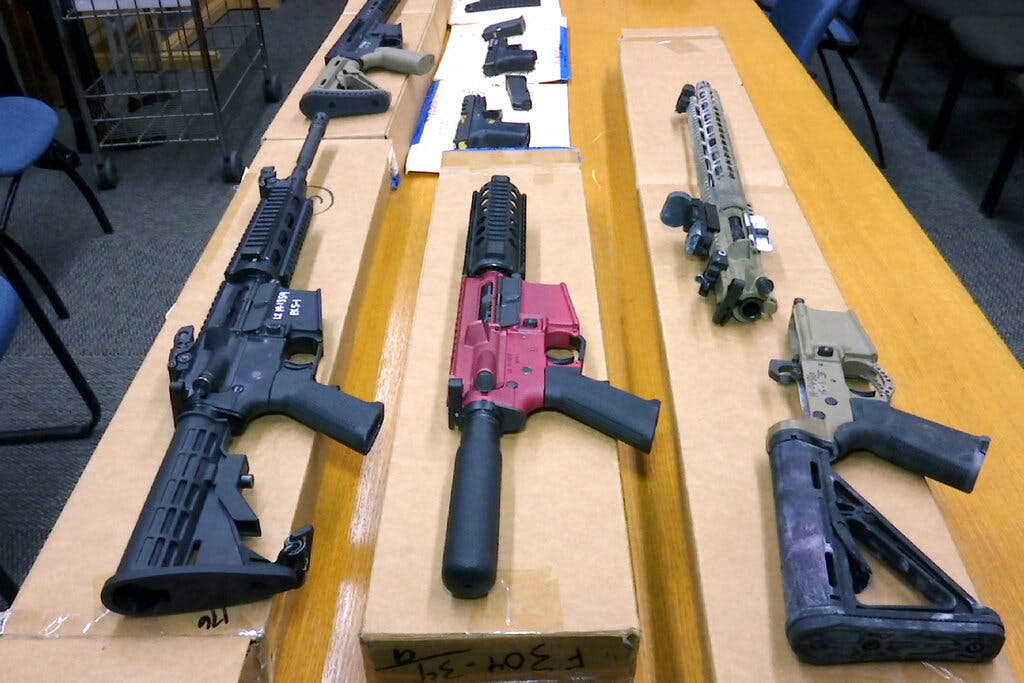Supreme Court Upholds Regulations on Ghost Guns, Like the One Allegedly Used by Luigi Mangione To Kill the CEO of UnitedHealthcare
A gun kit is a gun the same way an unassembled table is still a table, Justice Gorsuch says in delivering the majority opinion.

In a split decision, the Supreme Court has ruled that untraceable firearms built from kits, known as ghost guns, are weapons that are covered under the Gun Control Act.
Crimes linked to those types of guns have been rapidly increasing and one was linked to a recent high-profile killing. Luigi Mangione, the suspect in the murder of UnitedHealthcare CEO Brian Thompson in Manhattan last year, was believed to have used a ghost gun in the shooting.
Under the Biden administration, the Bureau of Alcohol, Tobacco, Firearms and Explosives (ATF) adopted a rule stating the sales of “weapon parts kits” should be regulated similar to guns.
Gun manufacturers called it an overreach and filed suit to block it before it went into effect.
A district court agreed with the gun industry and vacated the rule. The Fifth Circuit of the United States Court of Appeals later affirmed the ruling.
The Supreme Court ruled 7-2 to reverse the decision.
Justice Gorsuch delivered the majority opinion and noted that profound changes in how guns are made and sold have taken place in recent years.
“With the introduction of new technologies like 3D printing and reinforced polymers … companies are able to make and sell weapon parts kits that individuals can assemble into functional firearms in their own homes,” Justice Gorsuch wrote.
He said law enforcement agencies have seen a rapid increase in crimes involving ghost guns. While there were about 1,6000 ghost guns submitted to the federal government for tracing in 2017, that number jumped to more than 19,000 in 2021. He said that evidence showed that efforts to trace the ownership of most of those weapons were almost entirely futile.
The majority of the court reasoned that gun kits could be considered weapons in the same way an unassembled table from IKEA is still considered a piece of furniture.
Justices Thomas and Alito dissented.
“A weapon-parts kit is not a weapon until it is converted into an operable gun,” Justice Thomas wrote in his opinion. “It is no more ‘something to fight with’ than the sort of ‘unformed block of metal’ that the Rules expressly exempts from regulation.”
Justice Thomas stated that Congress could have authorized the ATF to regulate any part of a firearm or any object readily convertible into one but did not.
“Unlike a disassembled firearm, a weapon-parts kit requires more than merely assembling the parts to become a functional gun,” Justice Thomas wrote. “Special tools and an indeterminate amount of time are required to convert an unfinished weapon-parts kit into a functional weapon.”
The National Rifle Association said it was disappointed in the ruling.
“Fortunately, a new administration is now in charge of the ATF that can correct this misinterpretation of federal law,” Executive Director of the NRA Institute for Legislative Action, John Commerford, said in a statement to the New York Sun.
Prominent gun rights advocate John Lott says he is “hopeful” the Trump Administration will change the ATF rule.
“These are homemade guns,” Mr. Lott said. “People have made homemade guns in the United States since before we were a country.”
Wednesday’s ruling is just one of several gun cases that the court has ruled on in the past year.
Last June, in Garland V. Cargill, the Court struck down the ATF’s ban on bump stocks, which enable semi-automatic rifles to mimic a fully automatic weapon.
And the same month in United States v. Rahimi, the Court ruled that the federal law prohibiting firearm possession by individuals subject to domestic violence restraining orders is constitutional.
In 2022, the Court forced multiple states to rewrite their gun regulations in the landmark case, New York State Rifle and Pistol Association v. Bruen.
The ruling struck down a century-old state firearms regulation requiring that to obtain a firearm license a citizen had to show a compelling need.
